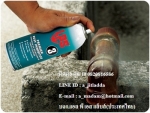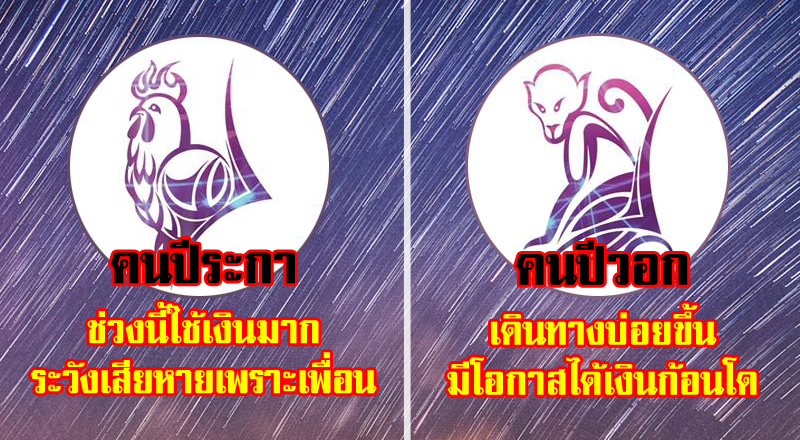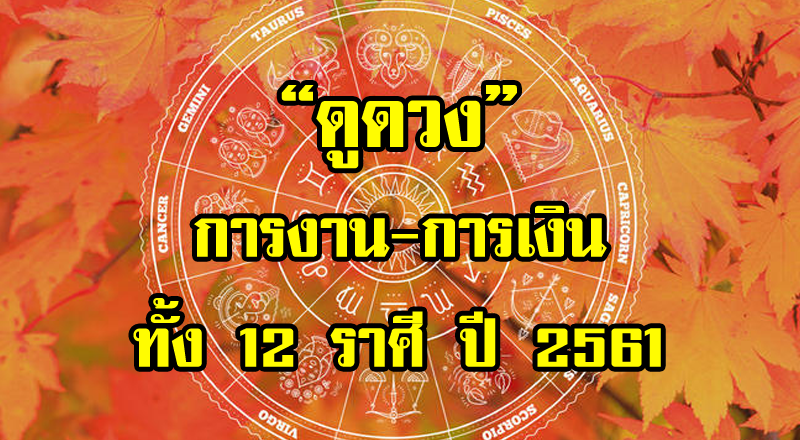Sodium carbonate, Na2CO3, Soda ash, โซเดียมคาร์บอเนต, โซดาแอช |
฿1 |
|
ชื่อผู้ประกาศ : Thailandchemicals เบอร์โทรศัพท์ : 034854888, 034496284 โทรศัพท์มือถือ : 0824504888, 0800160016 ที่อยู่ : 36/5 ม.9 ต.นาดี อ.เมืองสมุทรสาคร ร้าน Thailand Chemicals |
นำเข้าและจำหน่าย โซเดียมคาร์บอเนต, Sodium carbonate, Na2CO3, โซดาแอส,
โซดาแอซ, Soda ash, Soda bicarbonate, โซดาแอช
โซดาซักผ้า,
Washing soda, โซดา แอช, โซดาแอชไลท์, โซดาแอสไลท์, soda ash light, soda ash
dens
โซดาแอช, โซดาแอซ, โซดาแอส, Soda ash
โซดาแอชมีชื่อทางเคมีว่าโซเดียมคาร์บอเนต มีสูตรเป็น Na2CO3 การผลิตโซดาแอช เรียกว่า กระบวนการโซลเวย์ หรือโซดาแอมโมเนีย กระบวนการผลิตโซดาแอชมีดังนี้
-หินปูน (CaCO3) มาเผา จะได้ CaO และ CO2 เป็นผลิตภัณฑ์
CaCO3(s)
-> CaO(s) + CO2(g)
-นำ CO2 มาทำปฏิกิริยากับสารละลาย NaCl เข้มข้น และ NH4OH ได้ NaHCO3 และ NH4Cl เป็นผลิตภัณฑ์
CO2(g) +
NaCl(aq) + NH4OH(aq) -> NaHCO3(s)
+ NH4Cl(aq)
-นำ NaHCO3 มาเผา จะได้ Na2CO3 , H2O และ CO2 เป็นผลิตภัณฑ์
2NaHCO3(s) -> Na2CO3(s) + H2O(l) + CO2(g)
Na2CO3 ที่ได้สามารถนำไปใช้ในการผลิตกระดาษ แก้ว สิ่งทอ สบู่ ผงซักฟอก กระจก
สารกำจัดความกระด้างของน้ำ อุตสาหกรรมปิโตรเลียม
ใช้ในอุตสาหกรรมกระดาษ แก้ว สิ่งทอ
ปิโตรเลียม สบู่ และผลิตสารเคมีต่างๆ การผลิตโซดาแอชจะ เกิด CaCl2เป็นผลพลอยได้ จากขั้นตอนใช้ CaO และ NH4Cl ดังสมการ CaO + 2NH4Cl CaCl2 + H2O + NH3, CaCl2 นี้ตลาดต้องการน้อยและยากต่อการกำจัด NaOH นำไปใช้ในอุตสาหกรรมสบู่ ผงซักฟอก ผงชูรส และกระดาษ C12 ใช้ฆ่าเชื้อโรค รวมกับ H เป็นกรด HC1, โซดาแอชใช้เป็นสารที่ปรับสภาพน้ำ โดยจะช่วยเพิ่มค่าความเป็นด่าง (เพิ่มค่าpH) เพื่อช่วยปรับความกระด้างของน้ำและหากใส่ในกาต้มน้ำก็ช่วยลดตะกรันที่เกิดขึ้นจากการต้มด้วย
นอกจากนี้ยังใช้ผสมกับทรายในอุตสาหกรรมการผลิตขวดแก้ว, CAS:497-19-8โซเดียมคาร์บอเนต หรือ โซดา แอช
สูตรเคมี คือ Na2CO3เป็นสารประกอบเกลือของกรดคาร์บอนิก มีลักษณะเป็นผงสีขาว ไม่มีกลิ่น
สามารถดูดความชื้นจากอากาศได้ดี ละลายได้ในน้ำ มีฤทธิ์เป็นด่างแก่เมื่อละลายน้ำ
ละลายได้เล็กน้อยในแอลกอฮอล์ พบในขี้เถ้าของพืชหลายชนิดและสาหร่ายทะเล
(จึงได้ชื่อว่า โซดา แอช เนื่องจาก แอช ในภาษาอังกฤษ หมายถึง ขี้เถ้า)
เป็นสารเคมีที่ใช้ในอุตสาหกรรมหลายชนิด เช่น แก้ว เซรามิคส์ กระดาษ ผงซักฟอก สบู่
การแก้ไขน้ำกระด้าง โซเดียมคาร์บอเนต พบได้ในธรรมชาติในเขตแห้งแล้ง
โดยเฉพาะอย่างยิ่งในแหล่งแร่ที่เกิดจากทะเลสาบที่ระเหยแห้งไป ในสมัยอียิปต์โบราณ
มีการขุดแร่ที่เรียกว่า เนทรอน (natron) (ซึ่งเป็นเกลือที่ประกอบด้วยโซเดียมคาร์บอเนต(หรือ โซดา แอช) และโซเดียมไบคาร์บอเนต (เบกกิ้ง โซดา) และมีโซเดียมคลอไรด์
(เกลือแกง) และโซเดียมซัลเฟต ปนอยู่เล็กน้อย) จากก้นทะเลสาบที่แห้ง ใกล้แม่น้ำไนล์
และนำมาใช้ในการทำมัมมี่ ใน ปี พ.ศ. 2481 (ค.ศ. 1938) พบแหล่งแร่โซเดียมคาร์บอเนตขนาดใหญ่ใกล้แม่น้ำกรีนริเวอร์รัฐไวโอมิง สหรัฐอเมริกา ทำให้สหรัฐขุดแร่มาใช้แทนการผลิตทางกรรมวิธีทางเคมี ในประเทศอื่น
ๆ การผลิตโซเดียมคาร์บอเนตทำโดยกรรมวิธีทางเคมีที่เรียกว่า กระบวนการโซลเวย์ (Solvay process) ซึ่งค้นพบโดย เออร์เนส โซลเวย์ นักอุตสาหกรรมเคมีชาวเบลเยี่ยม ในปี พ.ศ. 2404 (ค.ศ. 1861) โดยเปลี่ยนโซเดียมคลอไรด์ (น้ำเกลือ) เป็น โซเดียมคาร์บอเนต โดยใช้ แอมโมเนีย และ
แคลเซียมคาร์บอเนต (หินปูน) และสารที่เหลือจากกระบวนการมีเพียง แคลเซียมคลอไรด์
ซึ่งไม่เป็นพิษแม้ว่าอาจก่อให้เกิดความระคายเคืองได้ และ
แอมโมเนียนั้นยังสามารถนำกลับมาใช้ได้อีก
ทำให้กระบวนการโซลเวย์มีต้นทุนการผลิตที่ต่ำกว่ากรรมวิธีแบบเดิมมาก
จึงถูกนำมาใช้ในอุตสาหกรรมการผลิตโซเดียมคาร์บอเนตอย่างแพร่หลาย ในคริสต์ศตวรรษ 1900 โซเดียมคาร์บอเนต 90% ที่ผลิต ใช้วิธีการนี้และยังคงใช้อยู่ในปัจจุบัน เดิมนั้นการผลิตโซเดียมคาร์บอเนตทำโดยกระบวนเคมีที่เรียกว่า
กระบวนการเลอบลังก์ (Leblanc process) ซึ่งค้นพบโดยนักเคมีชาวฝรั่งเศส ชื่อ นิโคลาส เลอบลังก์ ในปี พ.ศ. 2334 (ค.ศ. 1791) โดยใช้ โซเดียมคลอไรด์ (เกลือแกง) กรดซัลฟูริก (กรดกำมะถัน)แคลเซียมคาร์บอเนต (หินปูน) และถ่าน แต่กรดไฮโดรคลอริค (กรดเกลือ)
ที่เกิดจากกระบวนการนี้ ทำให้เกิดมลพิษทางอากาศ และแคลเซียมซัลไฟด์
ที่เหลือจากกระบวนการทำให้เกิดปัญหาต่อสิ่งแวดล้อม
แต่เนื่องจากโซเดียมคาร์บอเนตเป็นสารเคมีพื้นฐานในอุตสาหกรรมหลายชนิด
ทำให้มีการผลิตโซเดียมคาร์บอเนตโดยกรรมวิธีนี้ และเป็นกรรมวิธีหลักมาจนถึงช่วงปี
พ.ศ. 2423 - 2433 (ช่วง ค.ศ. 1880 - 1890) หลังการค้นพบกระบวนการโซลเวย์ กว่า 20 ปีโรงงานผลิตแคลเซียมคาร์บอเนตที่ใช้กระบวนการ เลอบรังค์แห่งสุดท้ายปิดลงในช่วงปี
พ.ศ. 2463 (ค.ศ. 1920)Soda ash is the common name for
sodium carbonate, a chemical compound frequently used in manufacturing,
industry, and even around the house. Glass production is one of the primary
uses for sodium carbonate. Detergents and cleaning agents may also make use of
it, and it can be used in cooking or as a food additive, as well.Use in the Home
Sodium carbonate is a natural
water softener, which makes it a common additive to detergents. Products used
for these purposes are often sold as washing ash or washing soda. Soda ash
prevents hard water from bonding with the detergent, allowing it to be
distributed more evenly during the washing cycle.In addition, the compound has
demonstrated ability to help remove buildup. It can help remove alcohol and
grease stains from clothing, as well as calcifications in everything from
coffee pots and espresso makers to boilers and hot water heaters. Running a
solution of sodium carbonate and water through these systems from time to time
will help prevent the minerals in water from building up in them and keep them
functioning at their best.Soda ash can also be used to
increase the alkalinity in swimming pools, helping to ensure the proper pH
balance of the water. It can be used in dying to help the dye bond to the
fabric effectively. Photographers also use a sodium carbonate solution as part
of the photo development process.Uses in Food and Cooking
Some recipes may also require soda
ash, usually as a reactive agent. Many German pretzel recipes, for instance,
call for boiling lumps of dough in a soda ash mixture before baking in order to
create a crispy outer shell or crust. Using the ash in this way is usually a
substitute for lye.A number of prepared foods and
beverages also contain sodium carbonate. It is commonly added to corn syrup,
for instance, which is a popular sweetening agent. Soda ash can be used as an
anti-caking agent, to help baked goods to rise, and to help control the acidity
of some foods. The compound may also be included in pharmaceuticals, particularly
over-the-counter pain killers.Use in Glass
One of the most common products
that can be made with soda ash is glass; more than 50% of all sodium carbonate
produced around the world is used for this purpose. When mixed in proportion
with sand and calcium carbonate, heated to the right temperature, and then
cooled quickly, the end result is soda-lime silica glass with excellent
durability and clarity. This sort of glass is in heavy demand in the automotive
and manufacturing industries, and can be found in everything from windshields,
to mirrors, to beer bottles.Industrial and Manufacturing Uses
Soda ash is a very common
industrial chemical as well. In addition to food and cosmetic products, it's
also used in fertilizers. When it comes to exhaust towers and chemical stacks,
this ash can play a very important role in air purification because when sodium
carbonate reacts with sulfur dioxide and hydrochloric acid, for example, less
harmful compounds are produced.Chemical Formula
Sodium carbonate is known by the
chemical formula Na2CO3, in reference to the elements that make up its base
composition: Na, which is sodium; C, which is carbon; and O, which is oxygen.
The Na2CO3 combination does not usually occur in isolation in nature, however,
so it must be intentionally refined by scientists.Production
There are two main ways of
refining sodium carbonate. Trona, a mineral that occurs in natural deposits in
evaporated lake beds throughout the world, is the most common source. Some salt
water also contains sodium carbonate compounds. To extract the ash, scientists
usually subject the trona ore or salt water to different crushing, heating,
spinning, and other techniques.The compound can also be created
in a lab using the Solvay process rather than isolated from existing compounds.
Synthetic sodium carbonate usually has the same properties as that found in
nature, but can be more expensive to produce. The manufacturing process also
creates waste products, including calcium chloride, which can potentially cause
pollution.Safety
Sodium carbonate is generally
regarded as a safe substance. It can be handled without extraordinary
precautions, and the United States Food and Drug Administration has deemed it
safe for human consumption in all its forms. Those working to extract the compound
from raw ore or in labs should wear masks, however, as prolonged exposure to
any powder particulates can be harmful.SODA ASH is
used in water-base muds as a source of carbonate ions to precipitate calcium,
increase pH or flocculate spud muds. SODA ASH is the common name for sodium
carbonate (Na2CO3). It is a weak base which is soluble in water and dissociates
into sodium (Na) and carbonate (CO3) ions in solution.SODA ASH is primarily
used to reduce soluble calcium in water-base drilling muds and makeup waters.
Other uses include increasing pH and flocculating spud muds.
สอบถามข้อมูลเพิ่มเติมได้ที่
ฝ่ายขายThai Poly Chemicals Co., Ltd.
บริษัท ไทยโพลีเคมิคอล จำกัด
ที่อยู่36/5 ม.9 แขวง/ตำบลนาดี เขต/อำเภอเมืองสมุทรสาคร จังหวัดสมุทรสาคร รหัสไปรษณีย์74000
Tel.: 034854888,
034496284
Fax.: 034854899,
034496285
Mobile: 0824504888,
0800160016
Website :
www.thaipolychemicals.comEmail1 : thaipolychemicals@hotmail.com
Email2 : info@thaipolychemicals.com
denseNa2CO3โซเดียมคาร์บอเนตashSodiumCarbonateโซดาแอซโซดาแอสโซดาแอชwashing





















